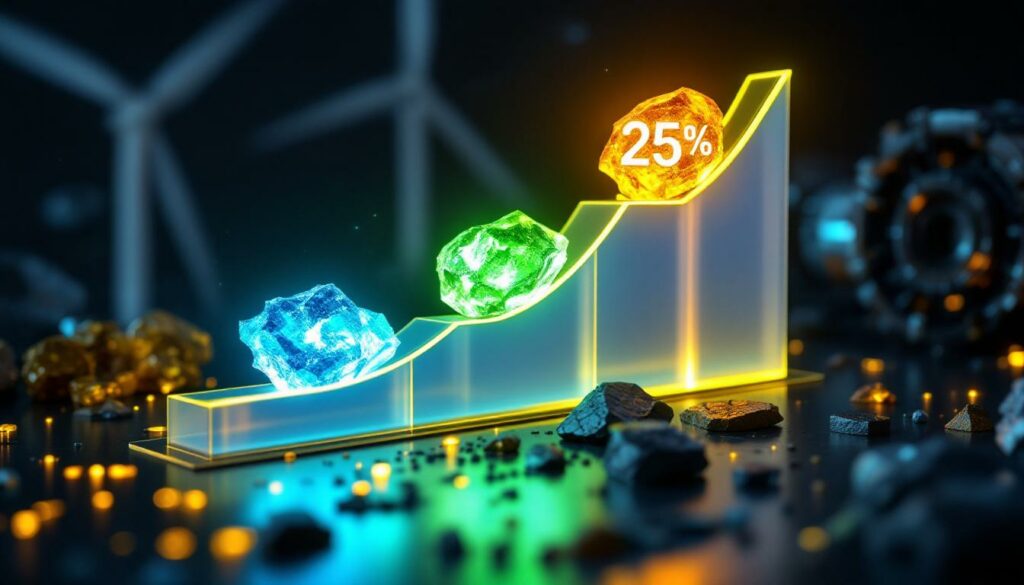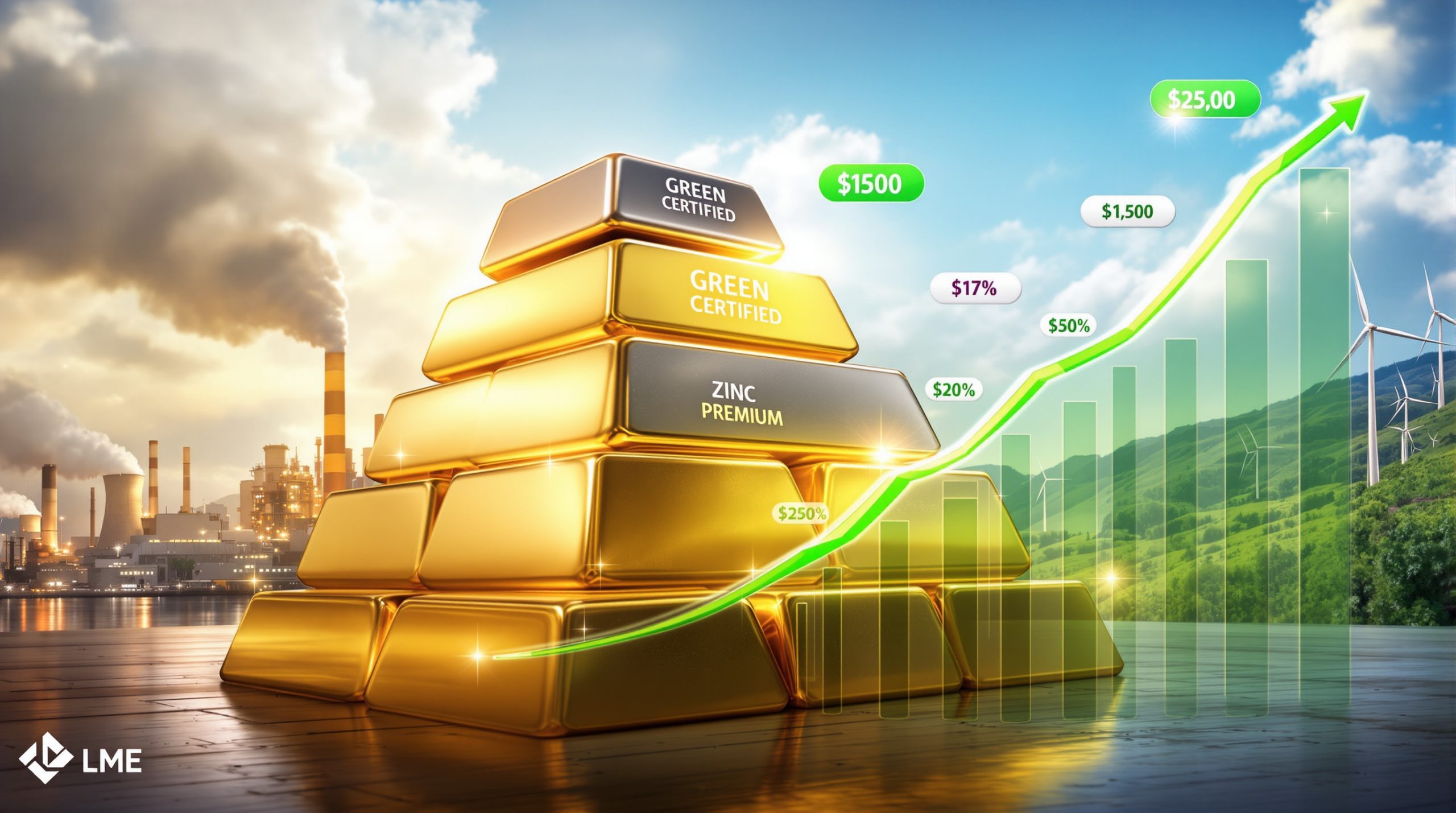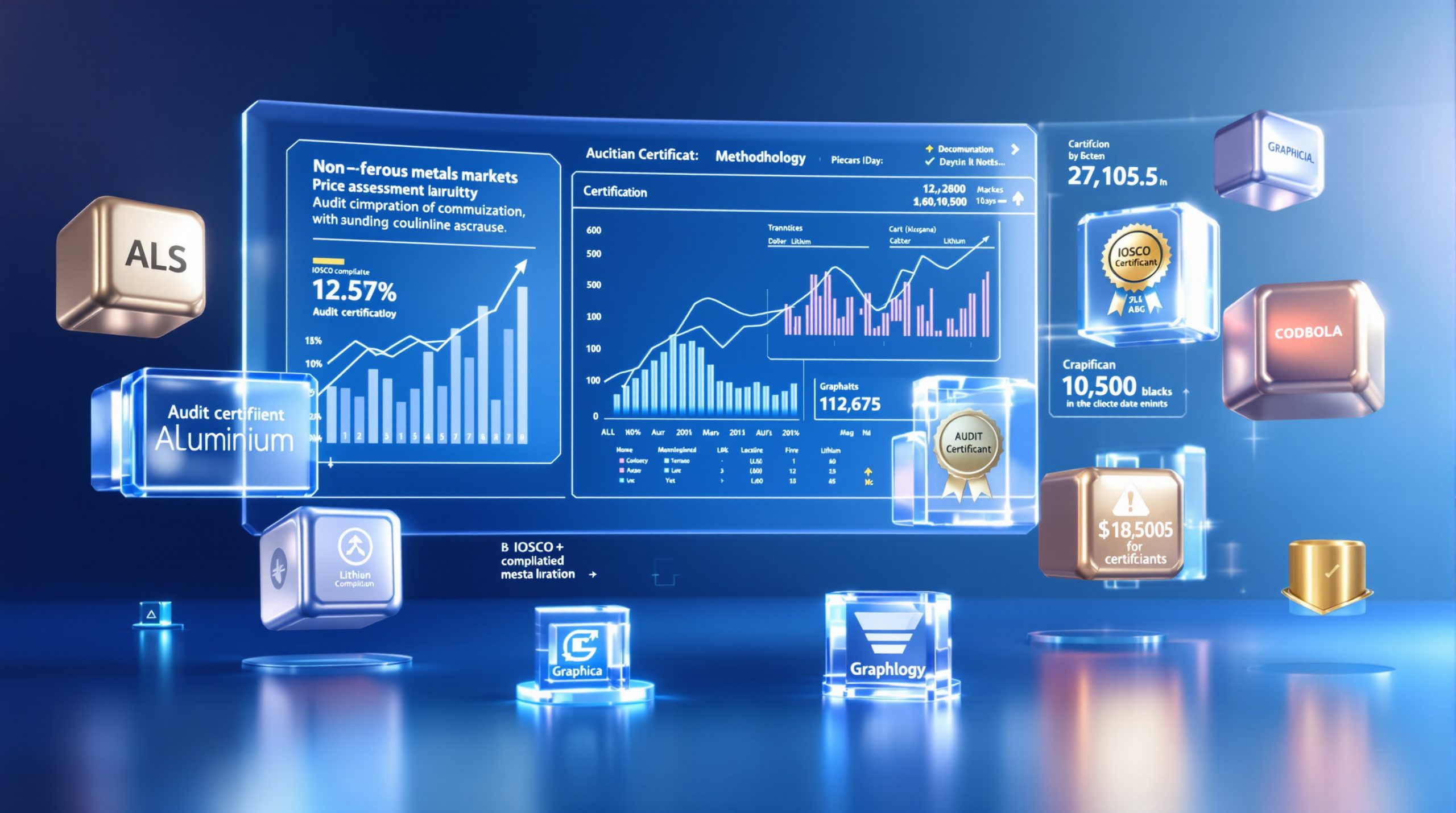Understanding Lynas Rare Earths' Q4 Revenue Growth: Market Implications and Industry Position
What drove Lynas Rare Earths' 25% revenue increase?
Lynas Rare Earths, the largest producer of separated rare earths outside China, reported exceptional financial performance in the fourth quarter of 2025. The company's revenue reached A$170.2 million ($112.33 million) for the quarter ending June 30, representing a remarkable 24.6% increase from A$136.6 million in the same period last year.
This impressive growth significantly exceeded market expectations, with analysts at Barrenjoey and Visible Alpha consensus forecasting revenue of approximately A$155 million. The 9.8% beat against consensus underscores Lynas' strengthening market position and pricing power in the global rare earths industry.
The revenue surge was primarily driven by higher average selling prices across Lynas' entire rare earth product portfolio. As geopolitical tensions continue to impact global supply chains, Western manufacturers have increasingly prioritized non-Chinese sources for critical minerals energy security, creating price premiums for Lynas' products.
"The company's vertical integration strategy, from mining operations at Mt Weld in Australia to processing at the LAMP facility in Malaysia, has enabled Lynas to capitalize on growing demand while maintaining quality control throughout the production chain," noted industry analysts.
Lynas' strategic position as the only major producer of separated rare earths outside China has allowed it to command premium pricing, particularly for its neodymium and praseodymium (NdPr) products, which are essential components in permanent magnets used in electric vehicles and wind turbines.
How does Lynas fit into the global rare earths landscape?
Lynas occupies a unique and strategically vital position in the global mining landscape. As the world's largest producer of separated rare earths outside of China, the company serves as a critical alternative in a market historically dominated by Chinese producers.
The company recently achieved a significant milestone by becoming the first producer of heavy rare earths outside China. This breakthrough has profound implications for global supply chain diversification efforts, particularly for elements like dysprosium and terbium that are essential for high-performance magnets in defense and clean energy applications.
Lynas' competitive advantages stem from its fully integrated operations spanning two continents:
- Mining operations at Mt Weld in Western Australia, home to one of the world's richest rare earth deposits
- Processing capabilities at its LAMP facility in Malaysia, where it produces separated rare earth products
- Technical expertise in rare earth separation and processing technologies
- Established customer relationships across Japan, Europe, and North America
The company's recent expansion into heavy rare earth production represents a strategic pivot to higher-value products. Heavy rare earths typically command premium prices due to their scarcity and critical applications in defense technologies and specialized industrial uses.
"Lynas' development of heavy rare earth production capacity represents a watershed moment for Western supply chains," explains Dr. James Litinsky, rare earths industry expert. "These elements are among the most strategically important and supply-constrained materials in the modern economy."
What are the strategic implications for the rare earths market?
Lynas' growing success highlights the accelerating momentum behind rare earth supply chain diversification efforts globally. The company's 25% revenue growth reflects not just company-specific factors but broader strategic shifts in how governments and industries approach critical mineral security.
Supply chain resilience has become a paramount concern for Western economies, with rare earths featuring prominently in national security and industrial policy. According to the U.S. Geological Survey, China still controls approximately 70% of global rare earth mining and 90% of processing capacity, creating strategic vulnerabilities that Lynas helps mitigate.
Several factors are reshaping market dynamics and pricing:
- Growing demand from energy transition technologies – Permanent magnets containing NdPr account for approximately 30% of rare earth usage by value but represent over 80% of the market by economic value
- Electric vehicle market expansion – Each EV requires approximately 1-2 kg of rare earth elements, with demand projected to grow at a CAGR of 27% through 2030 according to IEA forecasts
- Strategic stockpiling initiatives – Several nations have implemented or expanded rare earth reserves to buffer against supply disruptions
- Trade policy realignment – New regulations like the U.S. Inflation Reduction Act mandate increasing percentages of critical raw materials facility to be sourced from allies
Industry data suggests that NdPr prices have shown volatility but maintained an upward trajectory, with average prices increasing from approximately $80/kg in 2024 to $92/kg in 2025, supporting Lynas' revenue growth.
How does Lynas' performance reflect broader rare earths industry trends?
Lynas' robust financial performance serves as a barometer for the health of the non-Chinese rare earths sector. The 25% revenue increase aligns with several industry-wide developments that signal structural changes in the market.
Global market indicators point to sustainable growth:
- Rising prices across the rare earths spectrum, particularly for magnet materials like neodymium, praseodymium, dysprosium, and terbium
- Accelerating investment in Western production capacity, with over $1.5 billion committed to rare earth projects outside China since 2022
- Increasing vertical integration efforts by end-users to secure supply chains
- Growing recognition of rare earths as strategic resources by governments worldwide
Lynas' production capacity developments have positioned the company to capitalize on these trends. The company has consistently executed on expansion projects, including:
- Mt Weld mine expansion to increase ore processing capacity
- Kalgoorlie rare earths processing facility development in Western Australia
- Heavy rare earths separation capabilities at its Malaysian operation
- U.S. processing facility development in partnership with the Department of Defense
"The rare earths market is undergoing a fundamental restructuring, with suppliers like Lynas benefiting from the premium that customers are willing to pay for supply chain security and environmental compliance," noted industry analysts.
What challenges and opportunities face Lynas moving forward?
Despite its strong position, Lynas navigates a complex landscape of challenges and opportunities that will shape its future trajectory in the rare earths market.
Growth potential areas
Expansion of heavy rare earth production represents perhaps the most significant growth vector for Lynas. These elements command substantially higher prices than light rare earths, with dysprosium oxide currently trading at approximately $400/kg compared to neodymium oxide at around $95/kg.
Strategic partnerships with technology and defense sectors offer another avenue for growth. As industries from automotive to defense seek to secure non-Chinese rare earth supplies, Lynas is well-positioned to establish long-term offtake agreements that provide revenue stability and potential premium pricing.
Vertical integration into magnet manufacturing could allow Lynas to capture more value from the rare earth supply chain. While the company currently focuses on producing separated rare earth oxides, downstream integration could significantly enhance margins.
Potential headwinds
Price volatility remains an ongoing concern. Rare earth markets have historically experienced significant price fluctuations, with neodymium prices varying by as much as 40% within a single year. This volatility can complicate financial planning and investment decisions.
Regulatory considerations in operating jurisdictions present ongoing challenges. Lynas has navigated complex regulatory frameworks in Malaysia, where concerns about radioactive waste management from processing have required significant investment in mitigation technologies.
Competition from emerging rare earth projects globally is intensifying, with companies like MP Materials in the United States, Iluka Resources in Australia, and Rainbow Rare Earths in Africa all advancing projects that could increase non-Chinese supply in the coming years.
"The challenge for Lynas is balancing expansion with the potential for market oversupply as new projects come online," explains mining analyst Sarah Thompson. "Careful capacity planning and market timing will be critical to maintaining pricing power."
How are rare earths positioned in the critical minerals landscape?
Rare earth elements occupy a unique and increasingly central position in the critical minerals landscape. Their combination of limited substitutability, concentrated supply, and essential role in strategic technologies has elevated their importance in national security and industrial policy discussions worldwide.
Strategic importance of rare earth elements
The 17 elements that comprise the rare earths group have become indispensable components in modern technology:
- Neodymium and praseodymium: Essential for high-performance permanent magnets used in electric vehicles, wind turbines, and defense systems
- Dysprosium and terbium: Critical for enhancing temperature resistance in magnets for high-performance applications
- Lanthanum and cerium: Used in catalytic converters, petroleum refining, and glass polishing
- Europium, yttrium, and gadolinium: Key components in phosphors for displays, lighting, and medical imaging
This versatility across critical technologies explains why rare earths feature prominently on critical mineral lists worldwide. The European Commission, United States, Japan, Australia, and Canada have all designated rare earths as strategically important materials requiring supply chain security measures.
Investment landscape for rare earth projects
The investment environment for rare earth projects has transformed dramatically over the past five years. Previously considered high-risk speculative ventures, rare earth projects now attract significant capital from both private and public sources:
- Government funding initiatives like the U.S. Defense Production Act Title III program have allocated hundreds of millions of dollars to rare earth projects
- Strategic investments from end-users seeking supply security, particularly in the automotive and electronics sectors
- Public-private partnerships forming across supply chains to distribute development risk
- Increased capital markets interest in rare earth mining and processing companies
This investment surge reflects growing recognition of the strategic and economic value of secure rare earth supplies. Lynas, as the established leader in non-Chinese production, stands to benefit from this trend while facing increased competition from emerging projects. Furthermore, the continued focus on mining industry innovation has opened up new investment opportunities 2025 for those looking to capitalize on the rare earths sector.
FAQ: Understanding Lynas and the Rare Earths Market
What are rare earth elements and why are they important?
Rare earth elements comprise 17 metallic elements on the periodic table: the 15 lanthanides plus scandium and yttrium. Despite their name, most are relatively abundant in the Earth's crust, but rarely in concentrated, economically viable deposits.
Their importance stems from unique magnetic, luminescent, and electrochemical properties that make them irreplaceable in many high-technology applications. For example, neodymium-iron-boron magnets are 10-12 times stronger than conventional ferrite magnets of similar size, enabling miniaturization of electronics and high-efficiency electric motors.
Applications include:
- Permanent magnets for electric vehicles and wind turbines
- Precision-guided munitions and military radar systems
- Lasers and optical fiber amplifiers
- MRI contrast agents
- Catalytic converters and petroleum refining
Why is non-Chinese rare earth production significant?
China currently dominates global rare earth production and processing, controlling approximately 70% of mining and 90% of separation capacity. This concentration creates several strategic concerns:
- Supply chain vulnerability during geopolitical tensions
- Pricing power that can affect downstream industries
- Technology transfer requirements often imposed on foreign companies
- Environmental and labor standards that may differ from Western practices
As the largest non-Chinese producer, Lynas plays a crucial role in providing an alternative supply source that helps mitigate these risks. Its production represents approximately 12% of global separated rare earth supply, making it strategically vital to industries seeking supply chain diversification.
What differentiates heavy rare earths from light rare earths?
The rare earth family is commonly divided into two groups:
Light rare earths (LREEs) include:
- Lanthanum, cerium, praseodymium, neodymium, promethium, samarium, europium, and gadolinium
- Generally more abundant and lower-priced
- Primarily sourced from bastnäsite and monazite minerals
- Main uses include magnets (Nd, Pr), catalysts (Ce, La), and glass polishing (Ce)
Heavy rare earths (HREEs) include:
- Terbium, dysprosium, holmium, erbium, thulium, ytterbium, lutetium, and yttrium
- Generally less abundant and command higher prices
- Often sourced from xenotime or ion-adsorption clays
- Critical for specialized applications like high-temperature magnets (Dy, Tb) and phosphors (Y)
Lynas' achievement as the first non-Chinese producer of heavy rare earths is significant because these elements face even greater supply concentration than light rare earths, with China controlling over 95% of production prior to Lynas' entry into this segment.
How do rare earth prices impact Lynas' financial performance?
As demonstrated by the recent quarter, price movements significantly affect Lynas' revenue and profitability. Several factors make the company particularly sensitive to price changes:
- Fixed cost structure of mining and processing operations means profit margins expand rapidly when prices rise
- Premium pricing for non-Chinese supply creates a buffer against global price declines
- Product mix shifts toward higher-value heavy rare earths can enhance margins
- Long-term contracts with some customers may partially moderate price volatility
Industry analysts typically focus on neodymium-praseodymium (NdPr) prices as a benchmark, as these elements represent approximately 80% of rare earth market value and are Lynas' primary products by volume.
Future Outlook for Lynas and the Rare Earths Sector
Market projections for 2025-2026
The rare earths market outlook for 2025-2026 appears robust, supported by structural demand growth from energy transition technologies. Market research forecasts indicate:
- Global rare earth oxide demand is projected to grow at 8-10% annually through 2026
- NdPr demand specifically could grow at 12-15% annually due to electric vehicle and wind turbine expansion
- Heavy rare earth demand for specialized applications could see even higher growth rates of 15-20% annually
- Supply constraints are likely to persist despite new projects advancing, supporting price stability
For Lynas specifically, analysts project continued revenue growth as its expansion projects come online and product mix shifts toward higher-value elements. The company's established position and first-mover advantage in non-Chinese heavy rare earth production provide a competitive moat.
Strategic positioning opportunities
Looking forward, Lynas has several opportunities to strengthen its strategic position:
- Expansion of heavy rare earth production capabilities could significantly enhance revenue and margins, particularly for dysprosium and terbium
- Development of specialized product offerings tailored to high-tech applications like quantum computing, medical devices, and advanced defense systems
- Strengthening relationships with end-users in strategic industries through long-term supply agreements and technical collaboration
- Further vertical integration potentially including metal and alloy production
- ESG leadership as rare earth production outside China increasingly emphasizes environmental and social governance metrics
"The rare earths industry is at an inflection point, with demand growth accelerating just as supply diversification efforts gain momentum," explains industry consultant Michael Silver. "Companies like Lynas that have established production capabilities and technical expertise are uniquely positioned to benefit from this structural shift."
As global economies increasingly prioritize supply chain security for critical minerals, Lynas Rare Earths stands as a cornerstone of Western strategy for rare earth independence, with its Q4 revenue growth potentially signaling a broader transformation of the market landscape.
Want to Invest in the Next Major Mineral Discovery?
Stay ahead of the market with Discovery Alert's proprietary Discovery IQ model, which instantly notifies investors of significant ASX mineral discoveries and transforms complex data into actionable insights. Understand why historic discoveries can generate substantial returns by visiting Discovery Alert's dedicated discoveries page and begin your 30-day free trial today.




